Navigating EuroVelo 19 – Meuse Cycle Route: Essential public transport tips
Public transport is possibly the biggest headache for cycling tourists. Getting to the starting point of your trip, or getting back home at the end, is not always easy. While cycling long distances, sometimes you want to skip part of the itinerary because of the weather, the route itself or just because the tired mind and body need a day off.
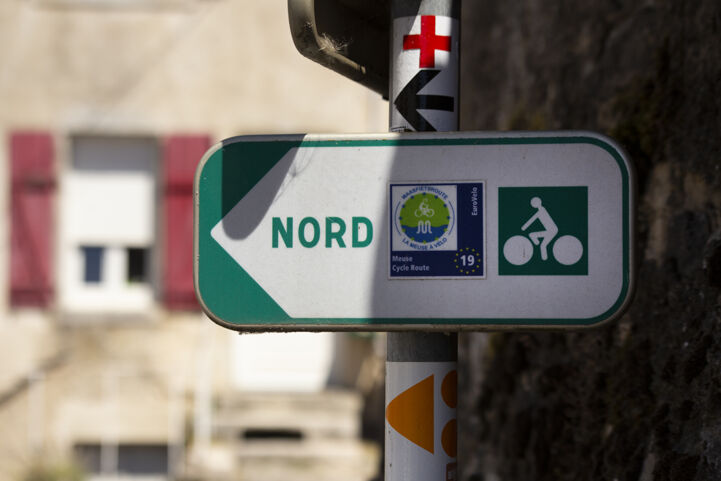
has good connections with public transport and it is possible to take your bike on trains in all the countries crossed by it – France, Belgium and the Netherlands.
The train is normally the best option when you are on a cycling trip, as it is easier to take your loaded bike with panniers on a train than any other transport. Luckily, the Meuse Cycle Route is generally well-served by railways. The closer to the mouth of the Meuse, the denser the cities and connections are. Ferry boats are another option to see this large European river from a different perspective.
France
EuroVelo 19 – Meuse Cycle Route does not really start at the source of the Meuse River. But this is to make the life of cycling tourists easier! The cycle route starts in Langres, a town with a train station, so you can get off your train with your bike and start pedalling. You will anyway reach Pouilly-en-Bassigny, where the Meuse water springs are, after a few kilometres.
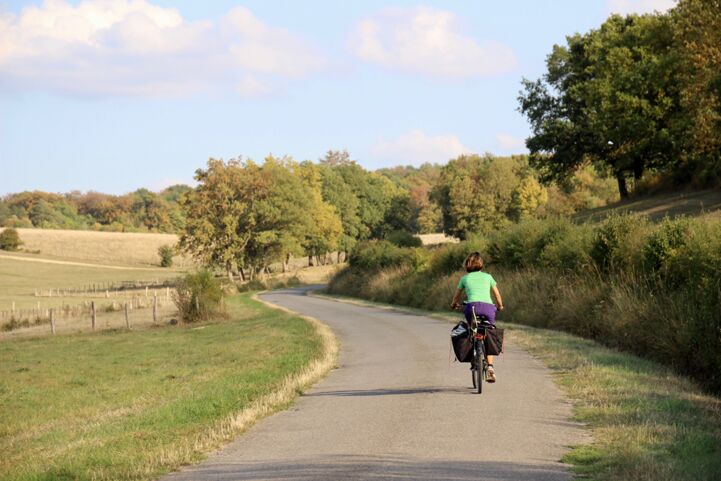
of the Meuse Cycle Route is very rural (and very beautiful), so there are train stations only in the biggest towns – Langres, Commercy and Sedan. The further you cycle, the more public transport options you will see. There is a railway line that follows the course of the Meuse from Sedan to Givet, at the border with Belgium, via Charleville-Mézières.
On TER Fluo regional trains, it is possible to take your bike on board for free and without a reservation. On high-speed trains, such as the ones that connect Sedan and Charleville-Mézières to Paris, a bike reservation is compulsory and comes for a small fee. All the information can be found on the French railway portal, SNCF, here.
Belgium
Once upon a time, there was a train connection along the Meuse between France and Belgium… but it is unfortunately not the case anymore. The railway was discontinued in the 1980s, so your next public transport stop is Dinant, around 20 kilometres away from the French border.
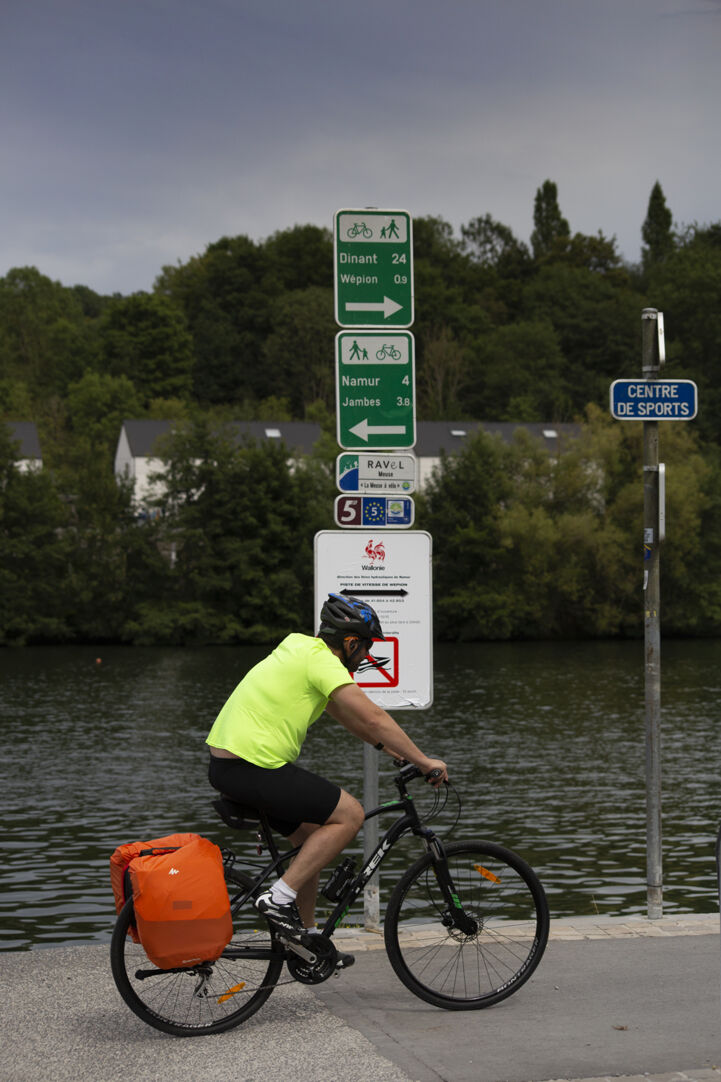
From this scenic city onwards, there are plenty of train stations all along your adventure towards Rotterdam and Hook of Holland, where the Meuse ends into the North Sea. The Meuse River has been a very important fluvial communication route for ships, roads, and railways throughout the centuries, and many key city and port hubs are located close to it. In Belgium, Namur and Liège are the two main cities in the French-speaking region of Wallonia and are well connected to the rest of the country by rail.
You can get your bike on any Belgian train. A bike ticket for any trip length is 4 euros and you can fit your bike in the provided spaces. A recent useful feature on the SNCB/NMBS website and app allows you to check the train composition and where the bicycle compartment is, for extra peace of mind while boarding the train.
As a very important European river, the Meuse acts as the natural border between Belgium and the Netherlands. The Meuse Cycle Route goes on both river branches between Eijsden and Roermond. If you stay on the Belgian side, you can expect quaint villages, stunning nature including the Maas valley river park and even some vineyards! Unfortunately there is no railway in this area, but small ferries (veerpontjes) will take you and your bike on the other side of the river to catch a train in the Netherlands.
The Netherlands
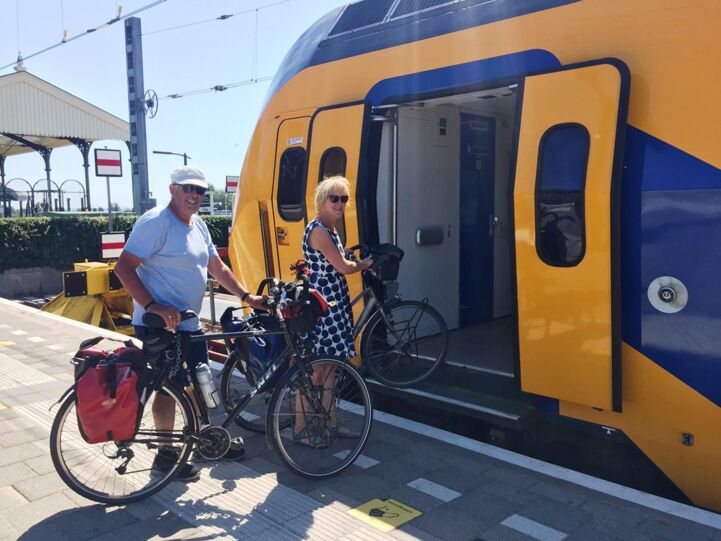
The Netherlands is the land of water, bicycles… and good train connections! Due to the large population density and number of train commuters, the Dutch railway company NS has clear rules about taking your bike on the train: sure, but no rush hours. If you are travelling on EuroVelo 19, you can take your bike on board between 9:00 am and 4:00 pm, and from 6:30 pm to 6:30 am from Monday to Friday. There are no restrictions on the weekend. You can buy a special ticket for your bicycle.
Between the dikes, the mills and the polders, the official route of EuroVelo 19 also includes some ferry crossings of the Maas and its channels. An alternative to get to Rotterdam faster is the Waterbus connecting Dordrecht to Rotterdam, but make sure to stop in Kinderdijk for its UNESCO heritage windmills. And no worries – you can take your bike on board for free.
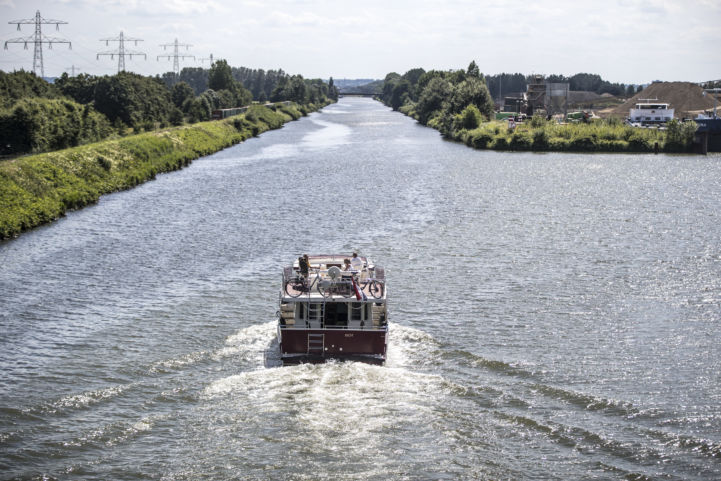
From Rotterdam, the end of EuroVelo 19, you have a variety of train options, including international trains, to get home or maybe embark on a new adventure!
In conclusion, the Meuse Cycle Route is not an ultra-cycling experience: 1,000 kilometres of mostly flat, scenic routes, cycling-friendly accommodation and services, and good public transport connections, along one of Europe’s most important rivers. Whatever your pace and the route stretch you are going to cycle, we are sure you will not regret the ride!
Article by Jessica Casagrande